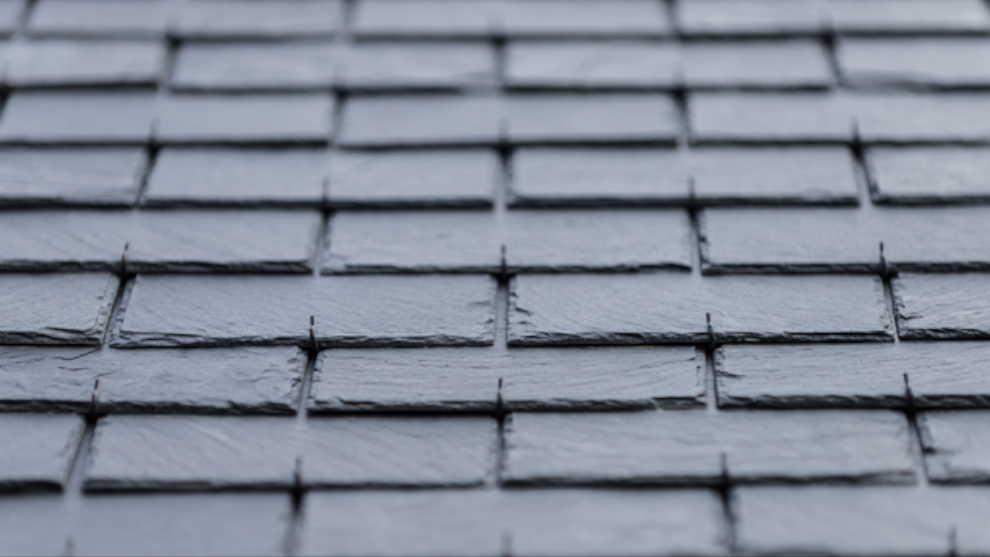Let’s compare the differences between regular shingles and slate
First, there is Asphalt Shingle Roof which is a type of material characterized by being waterproof, fire resistant, shock or impact resistant, with a weight that can be considered light compared to other materials, more accessible to acquire and easy to install. It is a product made by combining fiberglass, asphalt and other elements through a complex but very fast industrial process whose objective is to create resistant and waterproof tiles.
In general terms, it is a thermo-chemical process. The final product is a fairly light and resistant asphalt tile, capable of adequately withstanding the effect of elements such as rain, hail, solar radiation, wind, among others.
Asphalt Shingle Roof have been experiencing a particular boom in recent years due to their characteristics. It is a type of material characterized by being waterproof, fire resistant, shock or impact resistant, with a weight that can be considered light compared to other materials, more accessible to acquire and easy to install.
Wow! that sounds like a great roofing material, but let’s dig a little deeper into its features. It is a product made by combining fiberglass, asphalt and other elements through a complex but very fast industrial process whose objective is to create resistant and waterproof tiles. In general terms, it is a thermo-chemical process.
The final product is a fairly light and resistant asphalt tile, capable of adequately withstanding the effect of elements such as rain, hail, solar radiation, wind, among others.
It sounds good, but not that good
The production process for an asphalt shingle is quite laborious and the industrial machinery used to process them consumes a lot of energy and generates a lot of solid and noise pollution. There is also the great problem of recycling for the product once its useful life has ended, which turns out to be quite complicated to carry out and also consumes a lot of energy because it is difficult to process fiberglass.
Although there are manufacturers who claim that their product has an unlimited life, tests have shown that asphalt shingles actually only last up to fifty years. For all of this, asphalt shingles are becoming less and less popular with contractors and homeowners, which leads us to evaluate their direct competition: slate shingles.

Slate roof tiles, a formidable competition
Slate tiles have been used to build homes for hundreds of years. In fact, they have been used since medieval times, so they have a long history as a material for the construction of homes, specifically for roofs.
It is a 100% natural product, which is extracted from quarries in blocks and then divided into thinner parts that are later used as tiles. Despite this process, the material maintains its natural appearance once it has been converted into a tile.
It has long been used as a shingle with an angled (square) shape, but today the shingle can be scaled, resulting in a very beautiful appearance for the roof. In addition, it is a material that, due to its natural characteristics, is waterproof. It is a material that is very resistant to solar irradiation and is very, very durable. In fact, it resists the damaging effects of ice very well.
In addition to its thermal and structural characteristics, it has the advantage of being naturally very pleasing to the eye, giving a unique appearance to the building in which it is used. It usually needs very little maintenance over the years, which is very convenient and practical.
Despite its wonderful characteristics, this type of material must be installed on structurally resistant ceilings due to its total weight, which is why they are usually installed in old or historic buildings built especially for it or in houses with sufficiently resistant structures. However, it is possible to reinforce the structure of a house or building so that the tile roof can be installed without problems.
In general terms, its disadvantages are summarized in the cost and the need to have a structure capable of supporting its weight, but in the long term the investment is worth the effort.
